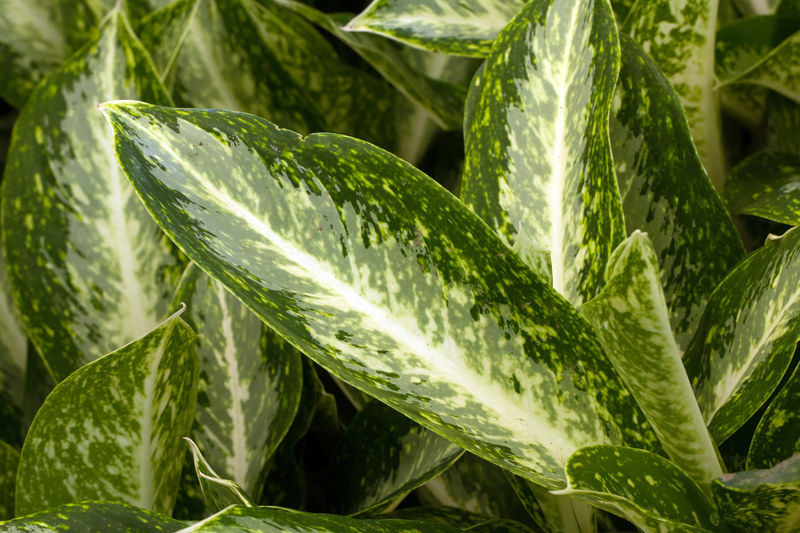Drape Your Shady Spaces in Lush Greenery with Climbers
Posted on 04/10/2025
Drape Your Shady Spaces in Lush Greenery with Climbers
Cultivating a garden in shady places might seem daunting, but transforming these areas into vibrant green oases is possible with the right selection of climbing plants. Let's explore how you can enhance your garden by draping your shady spaces in lush greenery with climbers.
Understanding Climbers' Role in the Garden
Before diving into plant selection, it's important to understand the unique advantages of using climbers in your garden:
- Vertical Growth: Climbing plants make excellent use of the vertical space, adding layers and dimensions to your garden.
- Green Coverage: They provide an effective cover for unsightly walls or bare fences, enhancing aesthetic appeal.
- Cooling Effects: Climbers can help reduce temperatures by providing a natural shade, which is especially beneficial in warm climates.
- Habitat Creation: These plants offer habitats and food for various insects and birds, contributing to local biodiversity.

Choosing the Right Climbers for Shady Spaces
Not all climbers thrive in low light conditions. Therefore, it's crucial to select species that are particularly suited for shade. Here are some ideal climbers:
1. English Ivy (Hedera helix)
Renowned for its hardiness and ability to thrive in deep shade, English Ivy is a popular choice for covering walls and fences. It requires minimal maintenance and offers a lush, evergreen appeal.
2. Climbing Hydrangea (Hydrangea petiolaris)
This climber is perfect for creating a stunning floral display in shady areas. It produces fragrant white flowers and can attach itself to walls and other surfaces without the need for additional support.
3. Virginia Creeper (Parthenocissus quinquefolia)
Virginia Creeper is known for its vibrant red autumn foliage, making it an excellent choice for adding color to your shady spaces. This vigorous climber grows well in dappled shade zones.
4. Clematis
Clematis varieties like Clematis montana can thrive in shaded areas, bringing a burst of color with their beautiful blooms. It's vital to select shade-tolerant varieties for best results.
5. Japanese Honeysuckle (Lonicera japonica)
With its sweetly scented flowers, Japanese Honeysuckle can thrive in partial shade. It can quickly cover large areas with lush greenery and fragrant flowers.
Planting and Caring Tips for Shady Climbers
Successfully transforming your garden's shady corners involves more than just choosing the right plants. Here are some practical tips for planting and maintaining climbers in shaded environments:
- Soil Preparation: Ensure your soil is rich in organic matter and drains well. Poor, compacted soil can be amended with compost.
- Watering Needs: Shady areas often require less watering than sunny spots, but it's crucial to maintain adequate moisture during the initial growth phase.
- Support Structures: Despite many climbers being self-clinging, additional trellises and wires can help guide proper growth.
- Pruning: Regular pruning encourages healthy growth and helps prevent climbers from becoming unruly.
- Fertilization: Use balanced fertilizers to provide necessary nutrients without overloading the soil.
Creative Ideas for Using Climbers in Shady Spaces
With the right approach, climbers can be incorporated into your garden design in exciting and innovative ways:
Living Walls
Creating living walls with diverse climbers can transform a plain outdoor space into a lush, natural gallery. Mix different species for diverse textures and colors.
Shade Arbors and Pagodas
Utilize shelter structures such as arbors and pagodas, adorned with climbing plants, to create enchanting shade retreats, ideal for relaxation or intimate gatherings.
Paths and Walkways
Allow climbers to cascade over fences or railings along paths and walkways, providing a natural canopy that enhances the garden's beauty while guiding visitors.

Environmental Benefits of Climbing Plants
Beyond their aesthetic contributions, climbing plants offer significant environmental benefits:
- Air Quality: These plants absorb carbon dioxide and release oxygen, improving air quality.
- Insulation: Climbers can help insulate buildings, reducing energy costs for heating in winter and cooling in summer.
- Soil Erosion Control: Their root systems stabilize soil and prevent erosion, particularly on sloped terrains.
Conclusion: Transforming Shady Spaces with Climbers
Transforming a shady space into a verdant paradise is not only feasible but rewarding. By selecting the appropriate shade-loving climbers and applying thoughtful design elements, you can create a flourishing area bursting with life, color, and ecological value. Whether you desire a serene sanctuary or an eye-catching garden display, climbers can help you achieve your vision.

